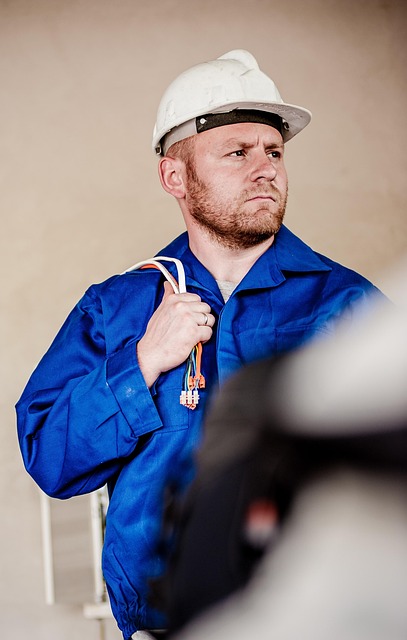Integrating new appliances and electronics requires an electrician's expertise for safety and functionality. They assess power demands, inspect wiring, ensure compliance with guidelines and codes, and implement grounding systems to prevent overheating, fires, and voltage issues. Basic DIY wiring is manageable but safety should always be prioritized; complex tasks or uncertainty necessitate professional help. Electricians use specialized tools and follow strict protocols to maintain safe operations and prolong appliance lifespan. Regular maintenance by qualified electricians further safeguards electronics, ensuring their safe and efficient operation.
Wiring new appliances and electronic devices is a critical task that requires a deep understanding of modern electrical standards and safety protocols. As technology evolves, so do the wiring requirements, demanding skilled professionals like electricians to stay abreast of these changes. This article guides you through the essential steps, from comprehending device-specific wiring needs to best practices for longevity and safety. By equipping yourself with the right tools and knowledge, you’ll ensure secure and efficient installations.
- Understanding Wiring Requirements for Modern Devices
- Essential Tools and Safety Precautions for Electricians
- Step-by-Step Guide to Wiring New Appliances
- Common Electrical Connections for Electronic Devices
- Best Practices for Ensuring Longevity and Safety
Understanding Wiring Requirements for Modern Devices
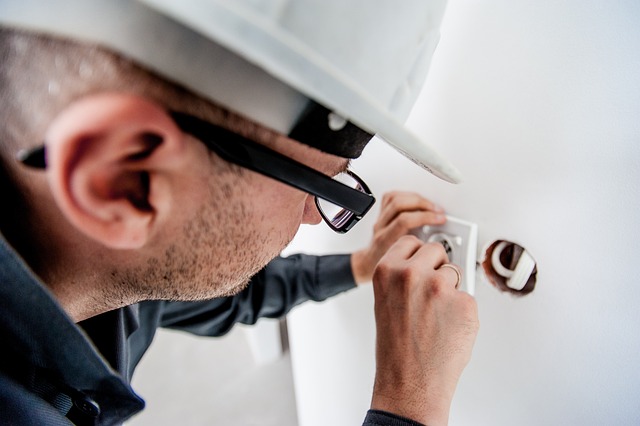
When it comes to wiring new appliances and electronic devices, understanding the specific electrical requirements is essential. Modern devices often demand more power than older models, so a qualified electrician should assess the load and ensure the wiring can handle the increased current. This includes checking circuit breakers and fuses, as well as inspecting wire gauge and insulation to prevent overheating and potential fires.
An electrician plays a crucial role in ensuring safety and functionality by correctly interpreting manufacturer guidelines and local electrical codes. They use their expertise to wire devices properly, including installing grounding systems for added protection and ensuring proper voltage levels are delivered. This meticulous process guarantees that your appliances operate smoothly and safely, avoiding costly repairs or worse, potential hazards.
Essential Tools and Safety Precautions for Electricians
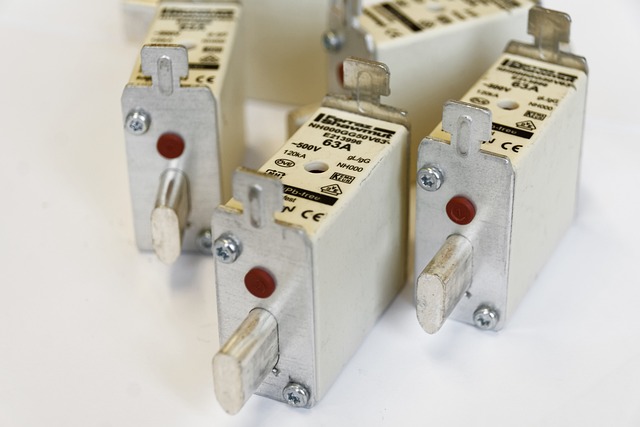
When it comes to wiring new appliances and electronic devices, electricians require a specific set of tools and adhere to strict safety precautions. Essential tools for the trade include wire strippers, pliers, screwdrivers, voltage testers, and multimeters. These tools are indispensable for tasks such as cutting and stripping wires, tightening connections, testing for power, and ensuring proper circuit functionality.
Safety is paramount for electricians. Always wear protective gear, including gloves and safety glasses, to minimize the risk of accidents. Additionally, knowing how to use ground fault circuit interrupters (GFCIs) effectively is crucial, as they protect against electric shock by immediately cutting power in case of a fault. Moreover, understanding electrical codes and maintaining a well-organized workspace contribute to a safer working environment for both professionals and end users.
Step-by-Step Guide to Wiring New Appliances
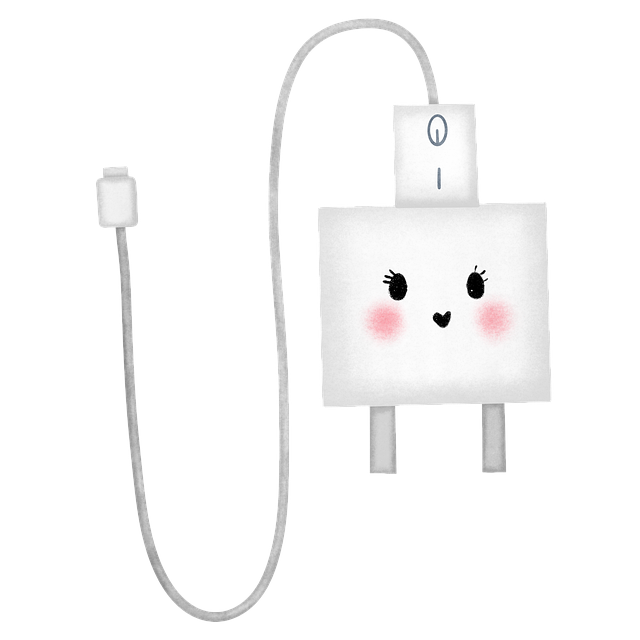
Wiring new appliances and electronic devices can seem daunting, but with a step-by-step approach, any homeowner or handyperson can tackle this task. Start by turning off the power at your circuit breaker box to ensure safety during installation. Next, gather all necessary tools and materials, including wire strippers, pliers, voltage testers, and the appropriate gauge wires for your appliance.
Begin by locating the power source, usually a nearby outlet or junction box. Identify the live, neutral, and earth (ground) wires. Connect the black (live) wire to the appliance’s hot terminal, the white (neutral) wire to the neutral terminal, and ensure the grounding wire is securely attached to the appliance’s metal parts for safety. Double-check your connections with a voltage tester before powering on the device. If you’re unsure or dealing with complex wiring, it’s best to consult an electrician for guidance to avoid any potential hazards.
Common Electrical Connections for Electronic Devices
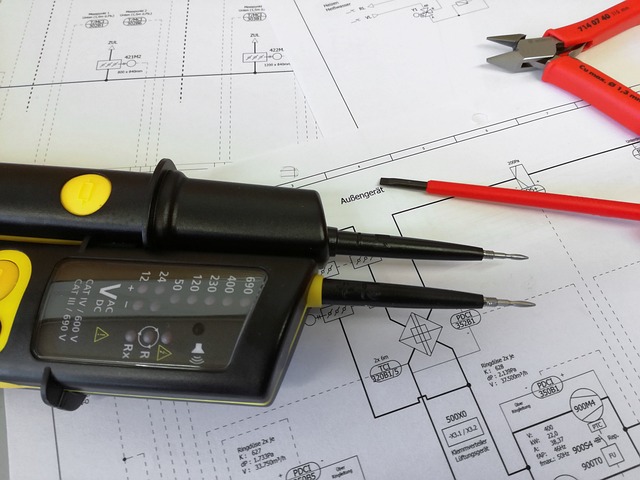
When it comes to wiring new appliances and electronic devices, understanding common electrical connections is essential. Standard electric outlets in homes typically provide two types of connections: 120-volt AC (alternating current) and 240-volt AC. Most small appliances like microwaves, coffee makers, and blenders use these standard outlets. However, larger appliances such as refrigerators, air conditioners, and electric stoves often require dedicated circuits, which are separate wiring pathways designed to handle higher voltage or current demands.
A qualified electrician is crucial for ensuring safe and proper wiring of these connections. They possess the knowledge and tools to assess your home’s electrical system, identify suitable outlets, and install dedicated circuits when necessary. Following safety protocols and industry standards, they guarantee that your electronic devices receive the appropriate power supply, preventing electrical hazards and extending the lifespan of your appliances.
Best Practices for Ensuring Longevity and Safety

When wiring new appliances and electronic devices, adhering to best practices is essential for both longevity and safety. Engaging the services of a qualified electrician is paramount. They possess the expertise and tools to ensure proper connections, minimizing the risk of electrical faults that could lead to fires or shocks.
Following manufacturer guidelines and local electrical codes is crucial. This includes using the appropriate gauge wires, ensuring proper grounding, and adhering to specific wiring configurations for different devices. Regular maintenance checks by a professional can also help identify potential issues early on, promoting the safe and efficient operation of your appliances and electronics for years to come.
When it comes to wiring new appliances and electronic devices, understanding the specific requirements and following best practices is crucial. By equipping yourself with the essential tools and adhering to safety precautions, you can ensure a job well done. Whether navigating complex electrical connections or embracing modern technologies, professionals in the field rely on their skills and knowledge to deliver reliable and safe installations. Remember, an electrician’s expertise is vital for maintaining longevity and ensuring the smooth operation of our increasingly connected world.
